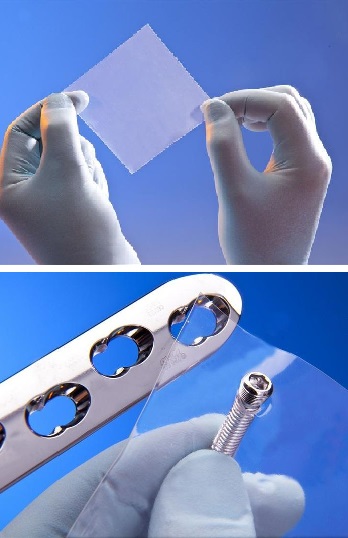–
–
Will you offer us a hand? Every gift, regardless of size, fuels our future.
Your critical contribution enables us to maintain our independence from shareholders or wealthy owners, allowing us to keep up reporting without bias. It means we can continue to make Jewish Business News available to everyone.
You can support us for as little as $1 via PayPal at office@jewishbusinessnews.com.
Thank you.
/By Johanna Weiß/
“Break a leg” may be what people say when they want to wish someone luck, but breaking a leg is more than bad luck. That is especially true for elderly people, who’s weaker bones often lead to severe fractures and complications.
Thanks to the Israeli company Regenecure, that may no longer be the case. Regenecure is developing what can be understood as an intelligent wrapping paper that enables broken bones to heal faster, more smoothly and even compensate bone loss.
In medical terminology, this wrapping paper is called membrane implant. “Membranes in general are semi-selective materials. They allow certain materials to get through, while others cannot, ” CEO Moshe Tzabari tells NoCamels.
When the Regenecure membrane is wrapped around the broken bone, it allows fluids to get through, but prevents cells, vigor or soft tissue from getting to the bone. This feature is crucial for the healing process.
“After a fracture there is a competition going on in the human body between soft tissue and bone, ” Tzabari explains. “If there is no barrier, soft tissue will infiltrate the wound and stop the bone from growing or make it grow in unintended ways.”
The membrane implant is a transparent, thin-yet-strong material that looks like plastic wrap. However, the membrane is regenerative and can be sutured, drilled and shaped into any geometrical form. Moreover, it attracts stem cells to grow and populate along the membrane surface.
The material, which comes from Germwrapping paper any, has been used in the past as a drug delivery system – to cover tablets that are not meant to dissolve in the stomach but only to take effect later. Michael Friedman, Professor at the Hebrew University in Jerusalem, discovered that the same material can be used to enable guided bone growth after fractures. The membrane implant can assist, and sometimes replace, traditional healing methods, he explains.
–
–
Cutting healing time in half
Comparative research has been done with sheep that suffered from fractures with high bone loss. Treated with splints only, these fractures never healed. With an additional bone-graft substitute, it took bones 28 weeks to heal. When using the membrane implant instead of the bone-graft, it also took 28 weeks, but Regencure says the growth proved to be more complete. Finally, when the membrane implant was combined with bone-graft substitute, complete healing took only 8-14 weeks.
“In short, the membrane implant can replace bone-graft substitute for better healing or even halve the time of healing if used in combination with bone craft substitute, ” Tzabari says.
While Regenecure was only ever meant to be used in humans, when vets heard about the membrane implant, they wanted in as well. In June of this year, vets started using the product in dogs and sheep, as licensing requirements on the veterinary market are lower than in human medicine.
A future in cranial reconstruction
Tzabari used to be a consultant for medical products before he joint Regenecure. He sees the future of fracture treatment in the combination of membrane implant with traditional approaches. According to him, the market is in the billion dollar range. “This is not only less painful for the patient, it also makes sense from an economical point of view. A second operation after fractures to harvest bone costs between $2, 000 and $3, 000. Our implant will be sold for $800.”
Regenecure’s first product for human medicine will be in the dental market at the end of 2014. The membrane implant will enable bone growth that is needed for teeth implants. The European Market will be approached first. Once the product receives the European CE mark of approval, it will also be allowed in most countries outside the European Union. The US market will probably be entered last after gaining FDA approval. Regenecure will look to enter the market of human fractures in mid-2015.
In an even more distant future, Tzabari hopes the implant might even be used in cranial medicine for example, to reconstruct face bones after serious accidents. The company is currently in the trial period for this use.
NoCamels, Israeli Innovation News





